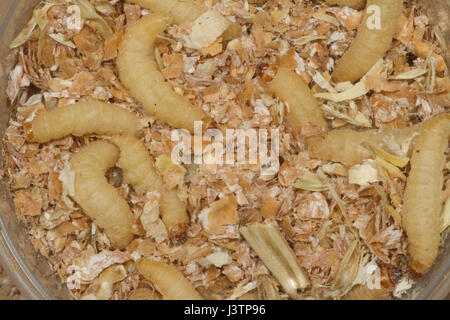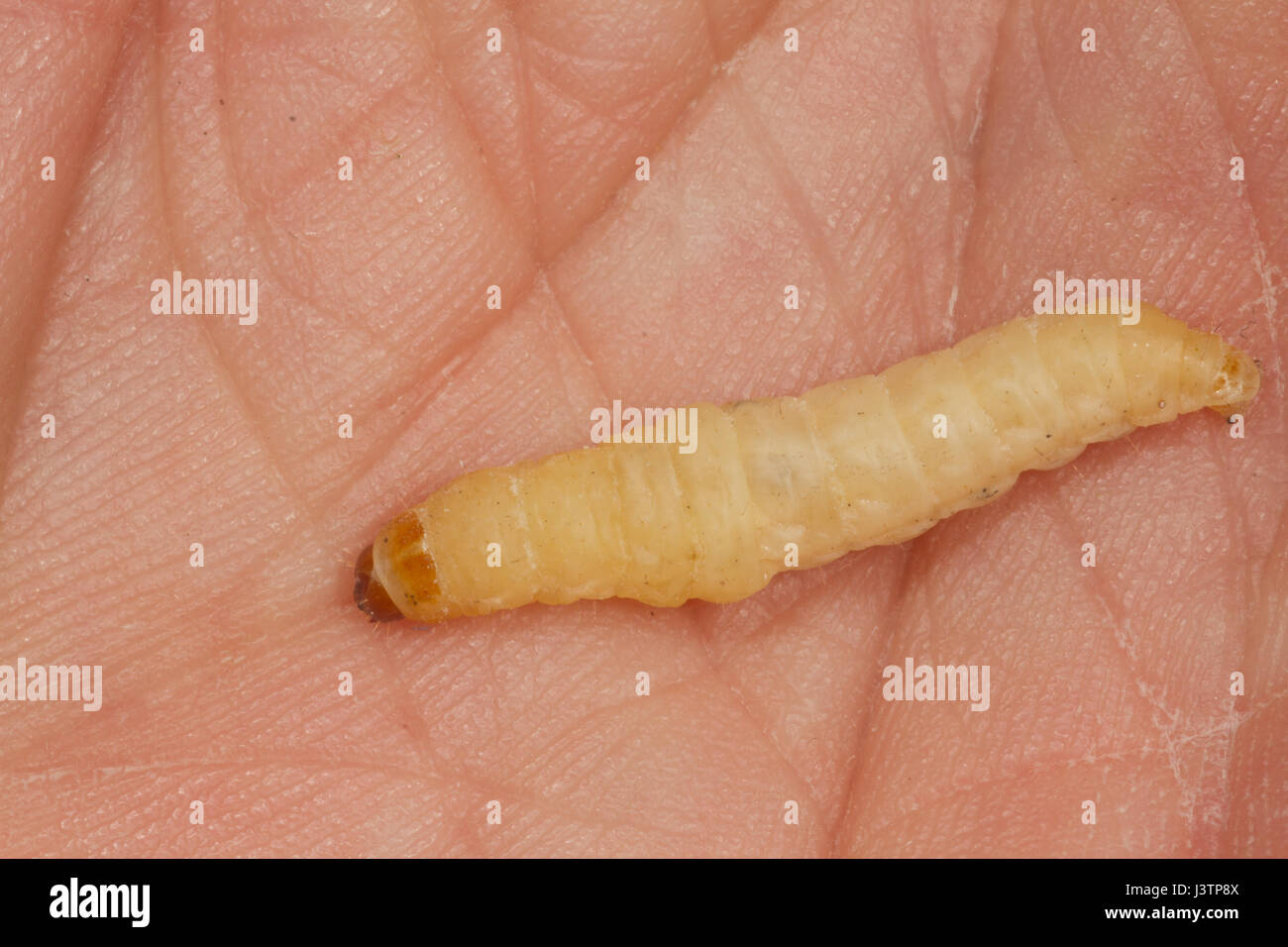
Beekeepers consider waxworms to be pests. In the wild, they live as nest parasites in bee colonies and eat cocoons, pollen, and shed skins of bees, and chew through beeswax, thus the name. Waxworms are medium-white caterpillars with black-tipped feet and small, black or brown heads.

The adult moths are sometimes called "bee moths", but, particularly in apiculture, this can also refer to Aphomia sociella, another Galleriinae moth which also produces waxworms, but is not commercially bred. Another species whose larvae share that name is the Indian mealmoth ( Plodia interpunctella), though this species is not available commercially. They belong to the tribe Galleriini in the snout moth subfamily Galleriinae. Two closely related species are commercially bred – the lesser wax moth ( Achroia grisella) and the greater wax moth ( Galleria mellonella).

Waxworms are the caterpillar larvae of wax moths, which belong to the family Pyralidae (snout moths).


 0 kommentar(er)
0 kommentar(er)
